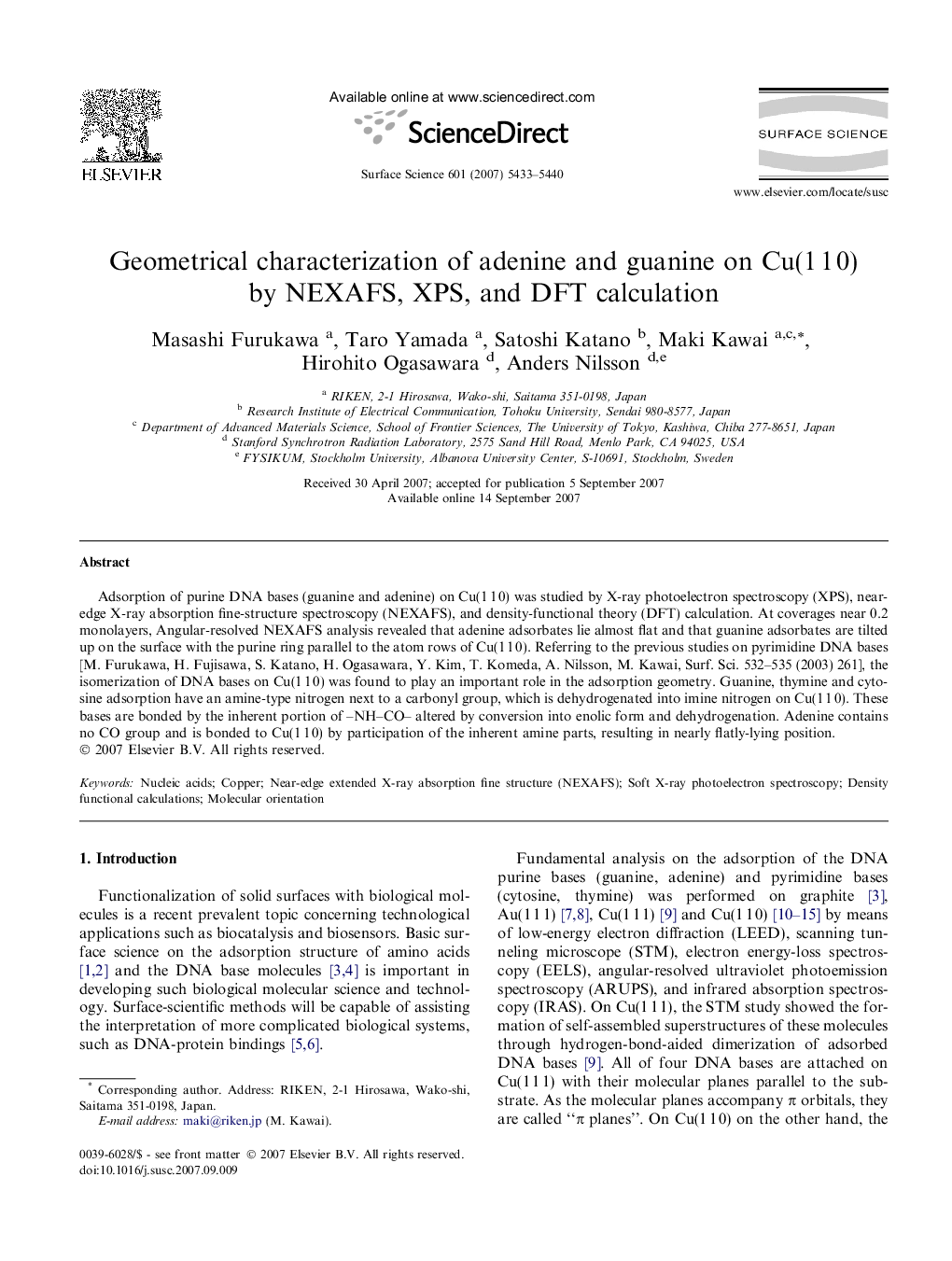| Article ID | Journal | Published Year | Pages | File Type |
|---|---|---|---|---|
| 5426309 | Surface Science | 2007 | 8 Pages |
Adsorption of purine DNA bases (guanine and adenine) on Cu(1Â 1Â 0) was studied by X-ray photoelectron spectroscopy (XPS), near-edge X-ray absorption fine-structure spectroscopy (NEXAFS), and density-functional theory (DFT) calculation. At coverages near 0.2 monolayers, Angular-resolved NEXAFS analysis revealed that adenine adsorbates lie almost flat and that guanine adsorbates are tilted up on the surface with the purine ring parallel to the atom rows of Cu(1Â 1Â 0). Referring to the previous studies on pyrimidine DNA bases [M. Furukawa, H. Fujisawa, S. Katano, H. Ogasawara, Y. Kim, T. Komeda, A. Nilsson, M. Kawai, Surf. Sci. 532-535 (2003) 261], the isomerization of DNA bases on Cu(1Â 1Â 0) was found to play an important role in the adsorption geometry. Guanine, thymine and cytosine adsorption have an amine-type nitrogen next to a carbonyl group, which is dehydrogenated into imine nitrogen on Cu(1Â 1Â 0). These bases are bonded by the inherent portion of -NH-CO- altered by conversion into enolic form and dehydrogenation. Adenine contains no CO group and is bonded to Cu(1Â 1Â 0) by participation of the inherent amine parts, resulting in nearly flatly-lying position.
